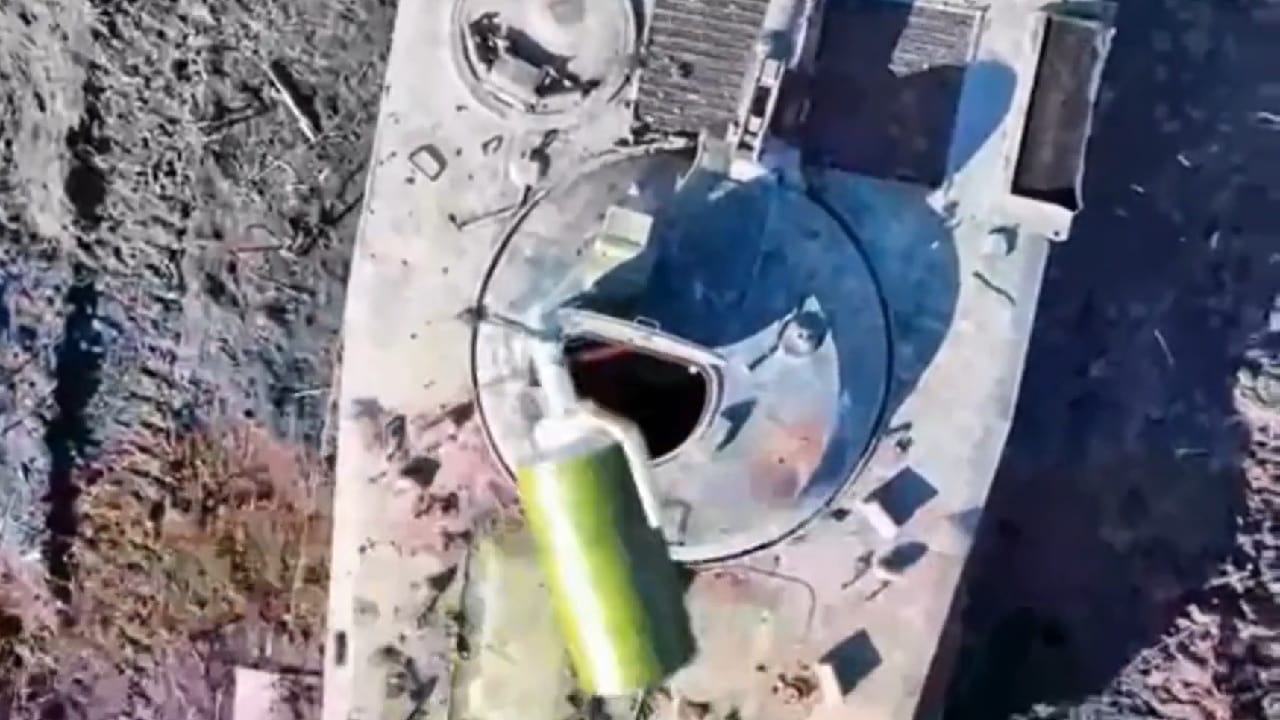Since the onset of Russia’s invasion of Ukraine, unmanned aerial vehicles (UAVs) have played a critical component of the ongoing warfare.
Both Moscow and Kyiv deploy a variety of foreign delivered lethal drones to aid their respective war efforts.
Ukraine notably uses the infamous Turkish Baykaytar TB2 drone to thwart Russia’s advance, while Moscow has deployed Iranian-made suicide drones, frequently targeting energy sectors and other critical infrastructure in the country. Throughout the conflict, it has been difficult to garner accurate figures surrounding weapon losses, casualties and other quantitative information.
Social media has become an invaluable resource during the war, especially to locate circulated footage reportedly from the front lines.
UAF Twitter handle releases video depicting the destruction of a BMP-2
A Twitter handle allegedly belonging to a member of the Ukrainian Armed Forces has published scores of content over the last eighteen or so months of warfare.
With nearly 80,000 followers, the handle @OSINTua is considered a relatively reliable resource.
Earlier yesterday, the Twitter used released video footage of a drone attack that resulted in the destruction of a Russian BMP-2.
According to @OSINTua, “Our company using FPV drones managed to destroy Russian BMP-2 (not only this one, U will see more). Our folks used 3 drones: firstly they made this BMP immobile and then destroyed it. Average price of one FPV — 350$. The price of BMP-2 — 300 K$.”
One reason drone use has become so popularized in modern warfare is because these weapons are extremely inexpensive, especially when compared to heavy weaponry like a fighting vehicle. In the minute-long video, a drone appears to be approaching a Russian BMP-2.
Upon striking the vehicle, a small fire erupts followed by fumes of smoke. The end of the video depicts a close-up scene of the aftermath, which does appear to be a completely destroyed BMP-2.
Introducing the BMP-2 and its specs/capabilities
The BMP-2 (Boyevaya Mashina Pekhoty) is a second-generation, amphibious infantry fighting vehicle first introduced by the Soviet Union in the 1980’s. The earliest variant in the BMP family is the BMP-1, which was introduced in the 1960’s. Similar to its predecessor, the BMP-2 is a low, agile, reliable and serviceable vehicle.
The most significant improvement that the latter model features is the incorporation of the fully-stabilized dual-fed 30mm cannon.
As explained by Military Today, “the previous gun had a maximum effective range of only 800-1 000 m. Also it could not be used against air targets. This cannon fires HE-FRAG, HEI-T and armor-piercing tracer (APDS-T) ammunition. It can engage armored targets at a range of 1 500-2 000 m, ground targets at a range of 4 000 m and helicopters at a range of up to 2 500 m. The APDS-T round penetrates 18 to 55 mm of steel armor, depending on the range. So even though it loses in terms of armor penetration to the 73 mm gun of the BMP-1, which could penetrate 335-400 mm of steel armor, the new 30 mm cannon proved to be a more versatile and successful weapon.”
Despite the improvements Russia’s BMP-2 sports, Ukraine was reportedly able to destroy the fighting vehicle with a first person view (FPV) drone.
As Kyiv moves forward with its counter-offensive, more of these small but deadly UAVs will likely be used in the effort to recapture territories.
Our company using FPV drones managed to destroy Russian BMP-2 (not only this one, U will see more).
Our folks used 3 drones: firstly they made this BMP immobile and then destroyed.
Average price of one FPV — 350$. The price of BMP-2 — 300 K$. pic.twitter.com/hHIC8qPJYj
— Kriegsforscher (@OSINTua) June 29, 2023
Maya Carlin, a Senior Editor for 19FortyFive, is an analyst with the Center for Security Policy and a former Anna Sobol Levy Fellow at IDC Herzliya in Israel. She has by-lines in many publications, including The National Interest, Jerusalem Post, and Times of Israel. You can follow her on Twitter: @MayaCarlin.

